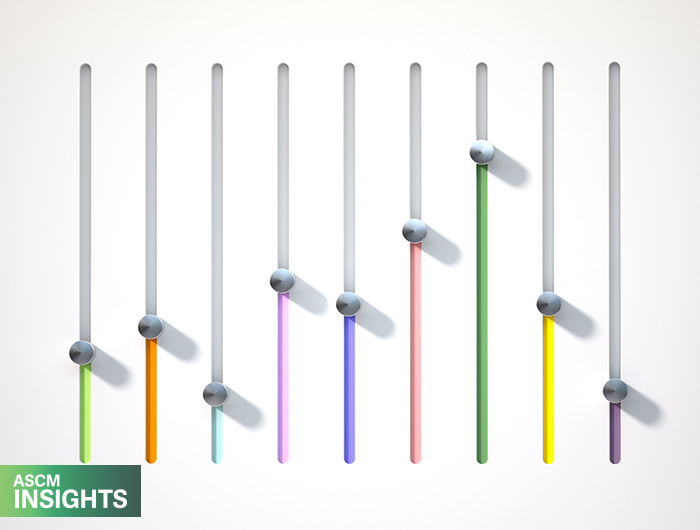The consumer packaged goods (CPG) industry thrives on speed, efficiency and consistent availability. Unfortunately, the journey of a product to the store shelf is fraught with potential disruptions. In a world where consumer demands shift rapidly and supply chains are increasingly complex, robust risk management is no longer a luxury, but a necessity for CPG companies.
CPG pain points
CPG companies face unique challenges that amplify the impact of supply chain disruptions: Perishability creates a ticking clock, where delays result in significant waste and financial loss, demanding precision in logistics and inventory management. Volatile demand, driven by fleeting consumer trends and economic shifts, necessitates agile forecasting and production systems. Stringent regulations around food safety and labeling add further complexity and require meticulous compliance.
While global sourcing can be cost-effective, it exposes CPG to geopolitical risks and trade uncertainties — especially with ongoing tariffs and retaliatory measures. Finally, in the age of social media, consumer sensitivity to ethical sourcing and supply chain transparency can quickly turn any mishap into a reputation-damaging crisis.
How CPG companies can withstand disruptions
To navigate these challenges, CPG professionals must adopt a proactive and comprehensive approach to risk management. Consider the following:
Establishing end-to-end visibility is paramount, beginning with detailed supply chain mapping to understand every tier of the network. Leveraging the internet of things and RFID technologies for real-time tracking of goods and ingredients provides crucial data for informed decision-making. Moreover, investing in advanced analytics tools enables the identification of potential bottlenecks and predictive disruption analysis, allowing for proactive mitigation strategies.
Accurate demand forecasting is also essential. Best-in-class CPG businesses are implementing AI-powered tools that anticipate shifts in consumer preferences. Building flexible production and distribution systems that can quickly adapt to demand fluctuations is another proven strategy. Contingency plans for sudden spikes or drops in demand, along with alternative sourcing strategies, should be developed to ensure continuous supply.
Diversifying the supplier base reduces reliance on single sources, mitigating risks associated with disruptions in specific regions or companies. Conducting thorough supplier risk assessments that focus on financial stability, quality and ethical practices is equally vital. In addition, be sure to foster strong, collaborative relationships with key suppliers, emphasizing open communication and transparency, to strengthen supply chain resilience.
Maintaining rigorous regulatory compliance and quality control requires staying abreast of evolving standards and implementing structured processes at every stage of the supply chain. Develop a comprehensive crisis-management plan for product recalls and safety incidents to help ensure swift and effective responses, minimizing damage to brand reputation and consumer trust.
Top CPG firms also prioritize sustainable and ethical practices. This involves responsible sourcing to minimize their environmental footprints and mitigate long-term environmental risks. Ensuring ethical labor practices throughout the supply chain not only aligns with societal values, but also strengthens relationships with consumers who increasingly demand transparency and accountability. Additionally, communicating sustainability and ethical commitments builds brand trust and loyalty.
Embracing digital technologies streamlines operations and enhances visibility; however, it also necessitates robust cybersecurity measures to protect against cyberattacks. Educate employees on best practices and implement secure data-management systems, which is crucial for safeguarding sensitive information and maintaining operational integrity.
In CPG, it’s important to conduct regular risk assessments to identify potential threats, allowing for the development of comprehensive business-continuity plans that address various disruption scenarios. Create a dedicated crisis-management team to enable swift and coordinated responses to unforeseen events, minimizing operational downtime and financial losses.
Finally, fostering an open culture, one in which employees are encouraged to report potential risks and concerns, promotes proactive problem-solving. Leaders must highlight the necessity for transparency and open communication, sharing lessons learned from past disruptions to continuously improve risk-management processes.
Turn risk into opportunity
While risk management focuses on mitigating negative impacts, resilience is about finding opportunities amidst challenges. By proactively addressing potential threats, CPG companies can gain a competitive advantage through greater reliability and responsiveness.
As stated previously, enhancing brand reputation by demonstrating ethical and sustainable practices builds consumer loyalty. These key relationships can be further strengthened with transparency and collaboration to create a foundation for long-term success.
In the fast-paced and ever-changing world of CPG, risk management is not just about avoiding disasters; it's about building a resilient and sustainable future. By implementing these strategies, CPG professionals can navigate the aisles of uncertainty with confidence and ensure the smooth flow of products from production to consumption.
Get started today with ASCM's supply chain resilience certificate. Enroll in a program that helps your team develop the competencies needed to prepare for potential disruptions.



